Modelling of draperies
Artists' Techniques
Pink, purple, green and blue draperies were modelled with gradations of colour. Orange robes, on the other hand, have a homogeneous base layer over which the artist applied a red dye. Only in a few instances were dark outlines added as a final step; in most cases, it is the contrast between white and colour – or between orange and red – which defines the drapery folds.
A particular modelling technique, observed for example on fols. 1v and 77r, involves the juxtaposition of mosaic gold and verdigris.
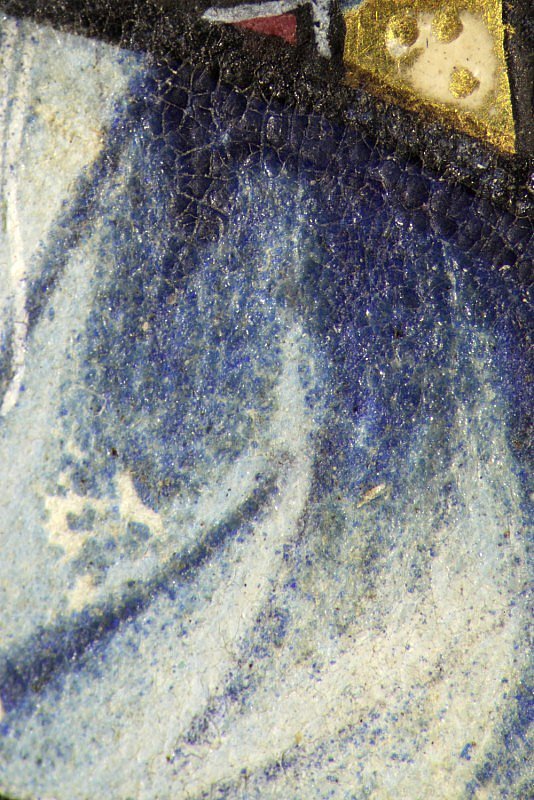
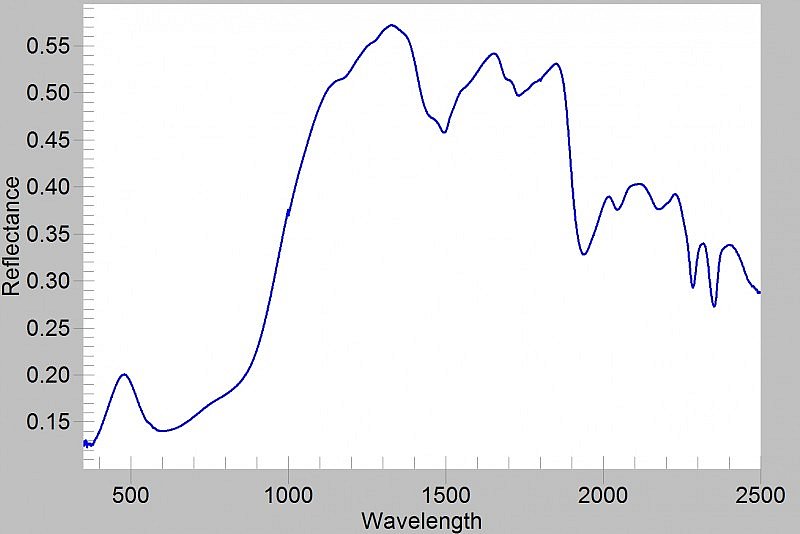
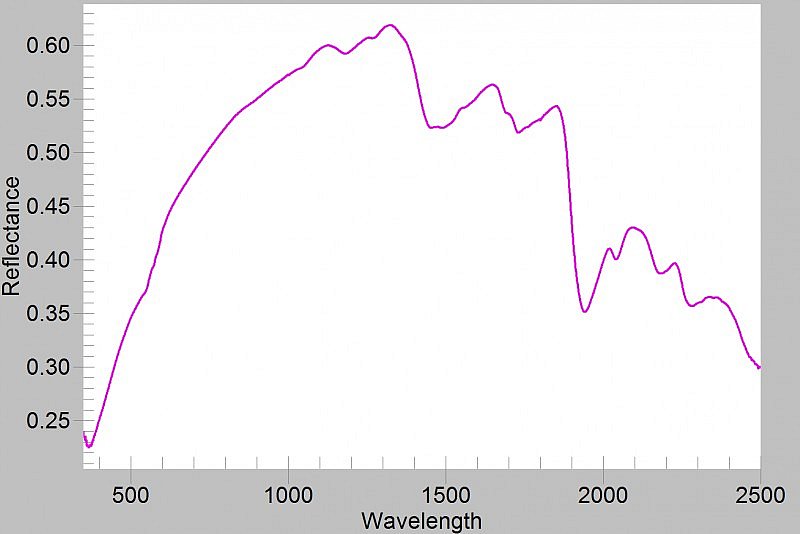
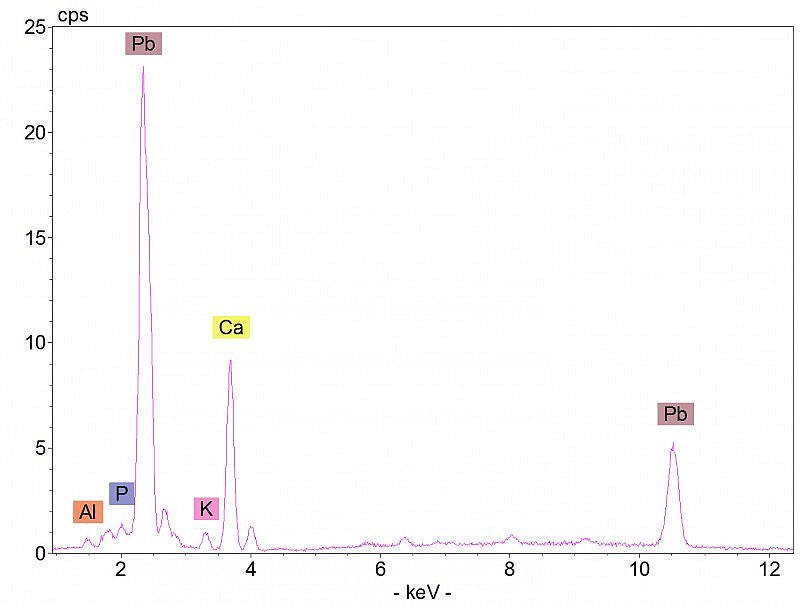
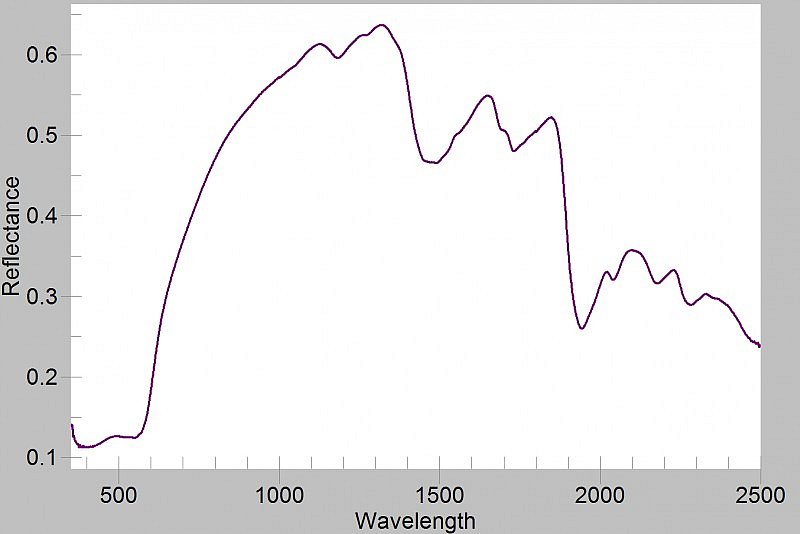
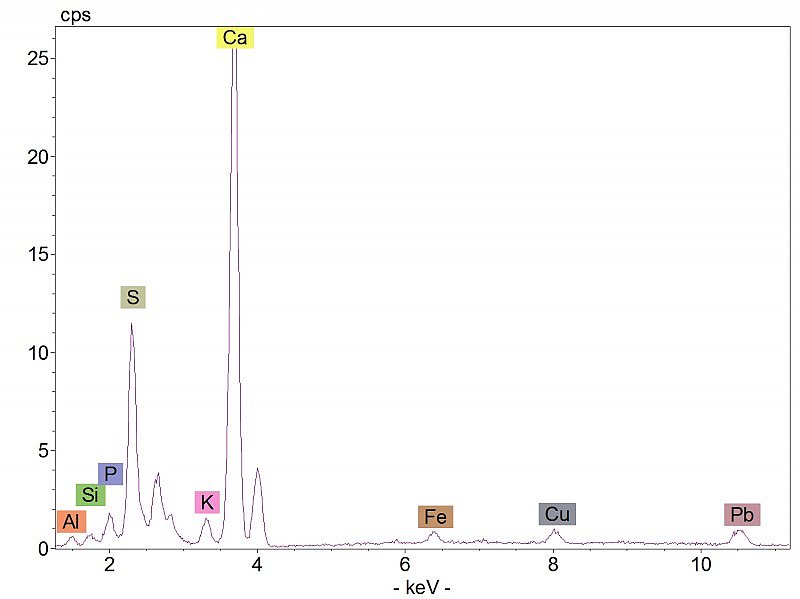
Prefatory image
St Edmund of Bury (841-869), the king and patron saint of East Anglia, was martyred by the Vikings. His pose is elegantly restrained, his gestures solemn and his expression calm, as he clutches an arrow, the symbol of his martyrdom.
St Edmund’s draperies are modelled with gradations of organic pink, verdigris and azurite (hotspot 1) with lead white, to create a three dimensional effect. The different hues of pink found on the page were obtained by adding different white pigments to a red dye. The light pink in St Edmund’s tunic contains lead white (hotspot 2) and the dark pink in the border instead contains gypsum (hotspot 3).